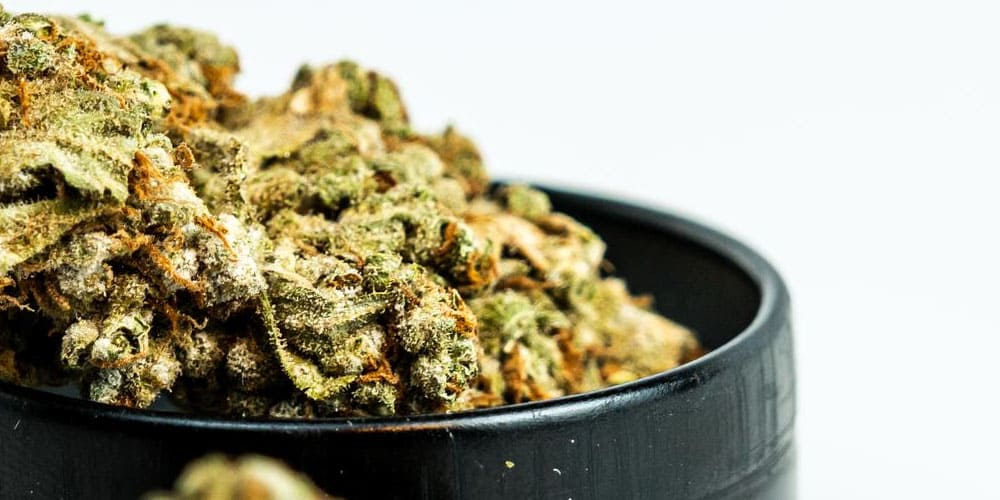
Weed Education
5 Ways to Rehydrate Dry Cannabis

Rehydrate dry cannabis is a critical concern for consumers of this versatile and complex plant, which has been a major topic in both medicinal and recreational contexts for years. Preserving the quality of cannabis is essential, and one of the common challenges faced is addressing the dryness of the plant. Dry cannabis can lead to a harsh smoking experience and a reduction in the essential terpenes and cannabinoids. This article focuses on five effective methods to rehydrate dry cannabis, aiming to enhance its potency and improve the overall user experience.
The journey of cannabis from cultivation to consumption involves several stages, each playing a critical role in its final quality. Proper storage and maintenance of cannabis are crucial, as exposure to air, light, or inappropriate temperatures can lead to drying out. Rehydrating cannabis is not just about restoring moisture, it’s about reviving its essence, ensuring a pleasurable and effective experience for users.
- Guide to Blending Different Cannabis Strains
- How to Distinguish High-Quality Cannabis Buds from Inferior Ones
- 7 Creative Bong Water Alternatives
Method 1: The Lettuce Leaf Technique

Lettuce is widely recognized for its high water content, making it an ideal natural rehydrating agent for dry cannabis. This unique method is not only simple and organic but also proves to be highly effective. By using lettuce to rehydrate cannabis, you are leveraging its natural moisture to gently restore the cannabis to its optimal state. This approach avoids the use of artificial chemicals or processes, ensuring the purity of the cannabis. Furthermore, this method is cost-effective and accessible, requiring no specialized equipment or ingredients other than fresh lettuce. This makes it a popular choice among those looking to naturally maintain the quality of their cannabis.
Steps
- Select a Fresh Lettuce Leaf: Choose a fresh lettuce leaf, ensuring it’s clean and free of pesticides.
- Place in Container: Place the lettuce leaf in the same container as the dry cannabis, ensuring they do not directly touch.
- Seal and Wait: Seal the container and let it sit for a few hours. The cannabis will absorb moisture from the lettuce leaf.
Pros and Cons
- Pros: Natural, easy, and pesticide-free.
- Cons: Overhydration can lead to mold. Regular checks are necessary.
Discover peace with High Octane OG Double Blunt, a pure Indica-dominant strain. Each box contains two 2g blunts for a shared, relaxed experience. Enjoy its high THC content of 31.6%, perfect for easing chronic pain and insomnia, and delight in its sour lemon flavor with a creamy floral finish.
Method 2: The Orange Peel Approach

Orange peels are not just fragrant, they are also an outstanding source of natural moisture, making them an excellent tool for rehydrating cannabis. This method not only revives dry cannabis but also infuses it with a subtle, pleasant citrus aroma, enhancing its overall sensory experience. The use of orange peels is a simple, organic approach that avoids any artificial additives, maintaining the natural purity of the cannabis. Additionally, this method is cost-effective and easily accessible, as orange peels are commonly available in many households.
Steps
- Obtain Orange Peels: Get fresh orange peels, ensuring they are clean.
- Place in Container: Place the peels in the cannabis container without direct contact.
- Monitor: Check periodically to avoid over-moisturizing.
Pros and Cons
- Pros: Adds a pleasant aroma, natural method.
- Cons: Risk of mold and altering the cannabis’s natural flavor profile.
Method 3: Commercial Humidity Packs

Commercially available humidity packs are a highly effective solution for maintaining optimal moisture levels in cannabis. These packs are specifically designed to create a controlled environment, ensuring cannabis stays fresh and potent. Their precision in regulating humidity levels surpasses homemade methods, offering a consistent and reliable approach. Ideal for long-term storage, these packs prevent cannabis from drying out or becoming overly moist. User-friendly and widely accessible, humidity packs are a preferred choice among cannabis enthusiasts for their convenience and efficiency in preserving cannabis quality.
Steps
- Choose the Right Pack: Select a humidity pack designed for cannabis, typically at 62% relative humidity.
- Place in Container: Put the pack in with the cannabis.
- Seal and Store: Keep the container sealed and store in a cool, dark place.
Pros and Cons
- Pros: Precise humidity control, low risk of mold.
- Cons: Cost and the need for periodic replacement.
Indulge in the unique experience of ZKittlez, a premium 1.3g preroll infused with Hash Rosin and kief, offering a sophisticated blend of sweet, tropical, and citrus flavors. This Indica-dominant hybrid delivers an uplifting head buzz and a relaxing body sensation, perfect for managing chronic pain, depression, insomnia, and anxiety, appealing to both recreational and therapeutic users.
Method 4: The Bread Slice Method

A slice of bread, with its porous texture and inherent moisture content, serves as an effective and simple tool for rehydrating dry cannabis. This method leverages the bread’s ability to gradually release moisture, which is then absorbed by the cannabis, restoring its freshness and pliability. Using bread is a cost-effective and readily available option, making it a popular choice among those who prefer natural and convenient solutions. Additionally, this approach is safe and does not introduce any chemicals or foreign substances to the cannabis, preserving its purity. It’s particularly useful for small-scale rehydration needs and is favored for its ease of use.
Steps
- Fresh Bread Slice: Get a fresh slice of bread.
- Place in Container: Put the bread slice in the cannabis container.
- Check Regularly: Monitor the moisture level to prevent mold.
Pros and Cons
- Pros: Easy and readily available.
- Cons: Potential for mold, might impart an unintended aroma.
Method 5: The Damp Paper Towel Technique

This method of rehydrating cannabis involves the use of a damp paper towel, offering a controlled and effective way to reintroduce moisture. The damp paper towel method is simple yet precise, allowing for a gradual and even distribution of moisture, essential for restoring the cannabis to its ideal state. This approach is particularly beneficial as it avoids the introduction of foreign odors or flavors, maintaining the natural aroma and taste of the cannabis. It is also highly accessible and cost-effective, utilizing common household items. The level of moisture can be easily adjusted by varying the dampness of the paper towel, giving users more control over the rehydration process.
Steps
- Dampen a Paper Towel: Lightly moisten a paper towel.
- Place in Container: Put the paper towel in the container without direct contact with the cannabis.
- Seal and Monitor: Close the container and check periodically.
Pros and Cons
- Pros: Controlled moisture addition, inexpensive.
- Cons: Risk of overhydration and mold.
APE Double Blunts Marshmallow OG is the ideal choice for a well-balanced hybrid experience. It provides a relaxing and euphoric high that’s perfectly calibrated to be soothing without overwhelming. Enjoy the smooth blend of relaxation and upliftment, ideal for unwinding without losing your sense of clarity and focus.
Rehydrating dry cannabis is a delicate process that requires attention and care. While natural methods like lettuce leaves, orange peels, and bread slices are accessible and easy, they carry risks of mold and altered flavors. Commercial humidity packs offer more precise control but at a higher cost. The damp paper towel technique is a middle ground, offering controlled rehydration with minimal expense. Whichever method is chosen, regular monitoring is essential to achieve the perfect balance of moisture, ensuring a revitalizing and enjoyable cannabis experience.



























